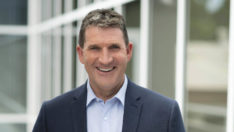‘No other medium can do what we do’: ARN’s Ciaran Davis
Speaking to Mumbrella yesterday, ARN’s chief executive Ciaran Davis expressed positive sentiment about the future of radio’s appeal to advertisers. Davis spoke on the macroeconomic storm’s role as a competitive advantage for Australian radio businesses, the ‘cultural challenge’ of the regional radio acquisition and the burgeoning digital reinvention of the radio industry.
ARN’s $330 million January acquisition of 46 regional radio stations from Grant Broadcasters saw strong performance in HT&E’s earnings report, with ARN Regional radio revenues up 11%, and EBITDA up 21%. In addition to a positive regional performance, ARN saw satisfactory growth in their metro audiences, most of which Davis assigns to be the result of a strong, successful alignment with the challenging 18-29 market – a feat which is proving to be a major draw for advertisers.

Ciaran Davis, ARN CEO.

